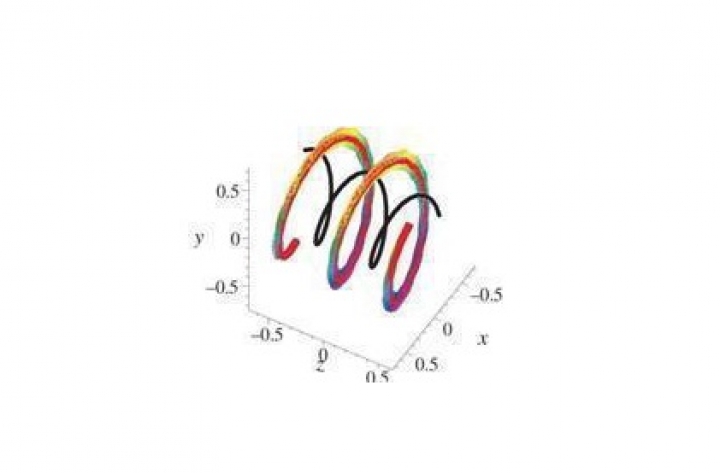Dark Helices Have A Bright Future In Lithography

Laser beams can be made to form dark as well as bright intensity helices, or corkscrews of light. Light helices have many fundamental and technological applications in lithography and the manipulation of particles through optical forces, such as particle trapping and particle transport.
Now, Dr. Ole Steuernagel, at the University of Hertfordshire's Science and Technology Research Institute, has shown that forming dark helices can have considerable advantages over employing their commonly considered bright cousins.
In lithography, the light helices can create novel materials with
helical imprints to provide left- or right-handed optically active materials.
When applied in laser tweezers that manipulate particles through optical
forces, helices can be used as a handedness filter for twisted molecules,
create twisted waveguides for trapped quantum particles and even provide
intertwined transport via intertwined optical helix configurations.
Dark helices are shaped like their bright helix counterparts but they are helically-shaped threads of darkness embedded in a background of bright light. And unlike bright helices, dark helices are not resolution limited and provide a better intensity contrast than bright ones. Furthermore, they can be generated one-by-one but, more importantly, they can also be arranged in a massively parallel fashion on a tight grid.
Dr Steuernagel explains, ``Dark helices are special because of their sharper intensity contrasts and, through my research, I have shown that they tend to outperform bright helices. This is potentially important for lithographic applications to create sharply defined and contoured helical imprints."
What's more, in a quantum-transport setting, dark helical wave guides interact less with trapped particles than their bright counterparts. In this case the advantage of using dark over bright helices is that they do less damage to quantum systems which are notoriously sensitive.
The study shows that in many cases dark helices `can do' what bright helices will `not be able to do' which is why Steuernagel hopes his theoretical investigation will soon be picked up by experimentalists.
A paper describing further details of this work, "Light and Dark Helices", will shortly appear in the scientific journal Optics Express.
































